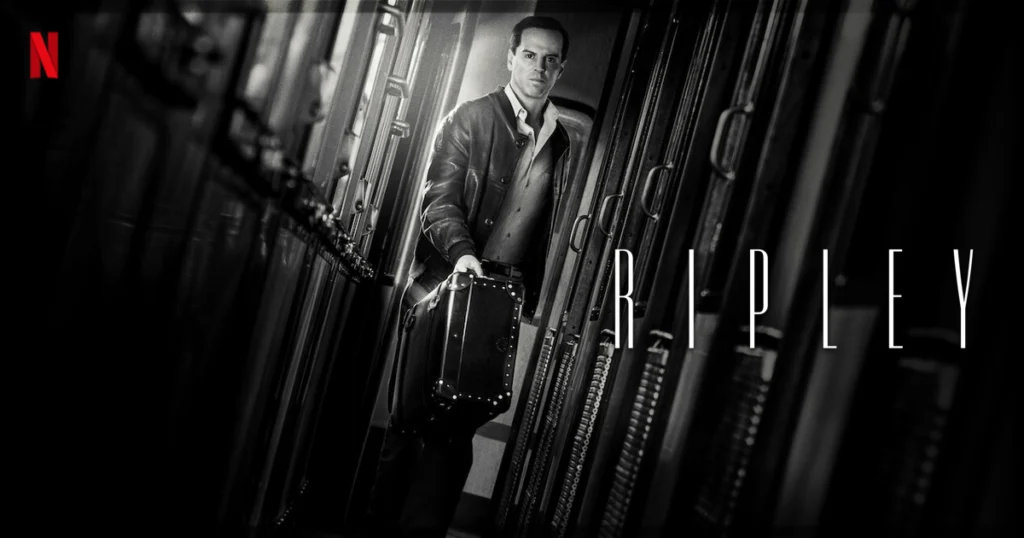There is a milestone in every cinephile’s journey that turns the table from a hobby to an obsession. A specific film ignites a fire within the individual, leading to an almost unexplainable passion. One of the world’s biggest cinephiles, the legendary director Martin Scorsese, not only invested in restorations but was vocal about the films that shaped the artist he is. The ignition for the famous director was The Red Shoes, a film he watched at the cinema theater with his family, leaving an unforgettable mark. Besides having the original red-colored shoes at home, as shown by his daughter Francesca on TikTok, Scorsese also dedicates conversations, such as last year’s BFI London Film Festival talk with Edgar Wright, examining his career and focusing on how the film impacted him. Lastly, he is the central figure and the narrator of David Hinton’s Made in England: The Films of Powell and Pressburger.
Martin Scorsese as narrator
For two hours, Scorsese converses with the camera about the artistry of Michael Powell and Emeric Pressburger’s partnership. A duo that led the mark in British cinema for two decades. Their contribution to Scorsese’s career is carefully explicit by him and the editing team, gluing the duo’s frames with the ones designed by Scorsese. The most fascinating moment of the documentary is when the narrator dedicates his discourse to comparing Powell and Pressburger’s work with his.
The red lights in Mean Streets reflect the influence of the color predominance in red shoes. Even the boxing fights of Raging Bull were inspired by the film. He also states how the duel in The Life and Death of Colonel Blimp served as the concept of the championship sequence in Raging Bull. Scorsese explains how their focus was on the aftermath. The interaction of the duelists mattered more than the fight itself. And the film captures your attention not for the answers – but for the passion in his words.
In this sense, the direct talking-head documentary format with excerpts can be tiresome. It is a lengthy essay that approaches almost their whole work together, summed with tons of context from that period. However, Scorsese’s charisma and knowledge grab the viewer’s attention for the entirety of the film. Each film has factual content and a sense of personal meaning to him that makes the film fascinating. His viewing of their films as theater, ballets, operas, and symphonies combines the format’s rules with the cinematographic magic. Michael Powell’s mantra was all art is one. And it is noticeable how Black Narcissus played with the musicality throughout a ten-minute sequence. The experimentation of a fifteen-minute ballet based on Hans Christian Andersen’s tale in The Red Shoes uses editing, art direction, lightning, and the possibilities of the media.
Made in England: The Films of Powell and Pressburger expands the limitations of the average documentary essay by having a direct subject to that topic. Scorsese cites how watching British films licensed to American television helped to build his vast film repertoire. Even lacking the characteristic bright colors of the technicolor and VistaVision, Powell and Pressburger’s films stood by themselves for their dramatic and cinematographic thrives. The inventive camera work, classical editing, and complex writing were too strong to be contained by the limitations of the devices.
Art as a connection to the world outside
When Scorsese speaks, there is nostalgia and love in those words. He remembers a time he discovered beautiful worlds inside his house. He could not play with his friends because he was an asthmatic child. Scorsese watched Michael Powell’s Thief of Baghdad or Tales of Hoffman dozens of times due to a TV show called Million Dollar Movies that would re-air the same film multiple times a week. Art is a source of comfort and help for many people. For Scorsese, it was his connection to the world outside.
It was such an impactful period of his life that Scorsese was one of the responsible for their rediscovery for new generations. He and the New Hollywood’s friends like Francis Ford Coppola were champions of Powell and Pressburger’s work. Coppola hired Powell to be a director in his studio Zoetrope in the 1970s. Scorsese connected the new generation of authors inside the studio system to those legends. Canonically, their work has a vital mark on film critics and other filmmakers. In Sight & Sound’s list of best films of all time, six of their films were among the 264 greatest films listed.
Watching Made in England: The Films of Powell and Pressburger, it is possible to explain how almost half of their partnership is considered the best film. They are of enormous importance to the formation of the filmmakers and scholars who debate film today. Their oniric approach, surrealist forms, and mix of art techniques captured the love of cinephiles.
When the credits roll, Made in England leaves the impression that it is a two-hour essay about Powell and Pressburger. But the professor here is a legend who was friends with them and has a lot of property to deepen their catalog. It is Scorsese’s passionate declaration of love for his masters.
Made in England: The Films of Powell and Pressburger has screened at a number of film festivals.
You can learn more about the film at the Ten Thousand 86 website for the title.
You might also like…
‘Ripley’ Series Review: A Force of Nature


